BY LINCOLN ANDERSON | Updated June 29, 5:15 p.m.: Corky Lee was such a vital, warm and constant presence that, for those who knew him, it’s hard to believe that he’s no longer here. Lee, 73, died in January, a victim of the brutal COVID pandemic.
A tireless documenter of Chinatown and a fighter for social justice for the Asian community, Lee was known by his self-dubbed moniker as the “Undisputed Unofficial Asian-American Photographer Laureate.”
A photo show up now at Pearl River Mart in Soho is keeping Lee’s indelibly positive spirit alive. “Corky Lee on My Mind: A Photographic Tribute” includes pictures by 21 friends, colleagues and mentees of Lee, some of them professional news or documentary photographers themselves. Contributors were asked to share photos of Lee or ones that evoked a feeling of him, such as community, activist or protest events.
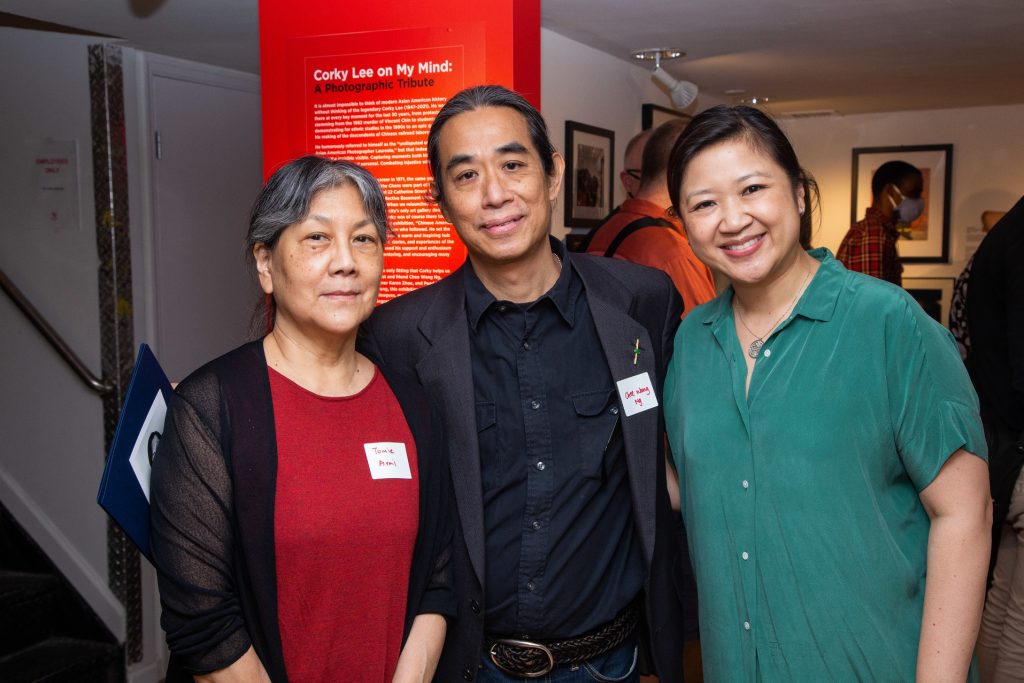
The show was curated by Chee Wang Ng, a close friend of Lee; Joanne Kwong, president of Pearl River Mart; and Karen Zhou, Lee’s longtime partner. Ng, who used to curate Lee’s shows, hung this one, too, taking extra-special care to get it just right.
“When I reached out to photographers from both coasts, they were overwhelmingly willing to share their work to pay tribute to Corky,” Ng said. “Knowing and collaborating with Corky for over 30 years, I was able to choose the photos to narrate the arc of Corky’s 50-year photographic career, from his Basement Workshop days to his funeral.
“Corky was a storyteller and loved holding court with his friends near and far,” he said. “Corky still holds court in this ‘Corky Lee on My Mind’ tribute group show, and still has stories to tell — if we can only listen.”
Ng noted that Lee was always humble enough to share his photographic experience with schools and at community events or just at a pop-up show for a few hours.
“My set of photos in this show is a triptych entitled ‘Dinner Time: The Salt of the Earth,'” Ng said. “Corky was the salt of the earth.”
The gallery is located in a small space at the back of the eclectic Asian furnishings and fashion store, at 452 Broadway, between Grand and Howard Sts. A private preview was held on June 10 that drew 200 people, including local politicians. Two days later, the artists in the show reconvened at the gallery for an artists’ meet-and-greet.
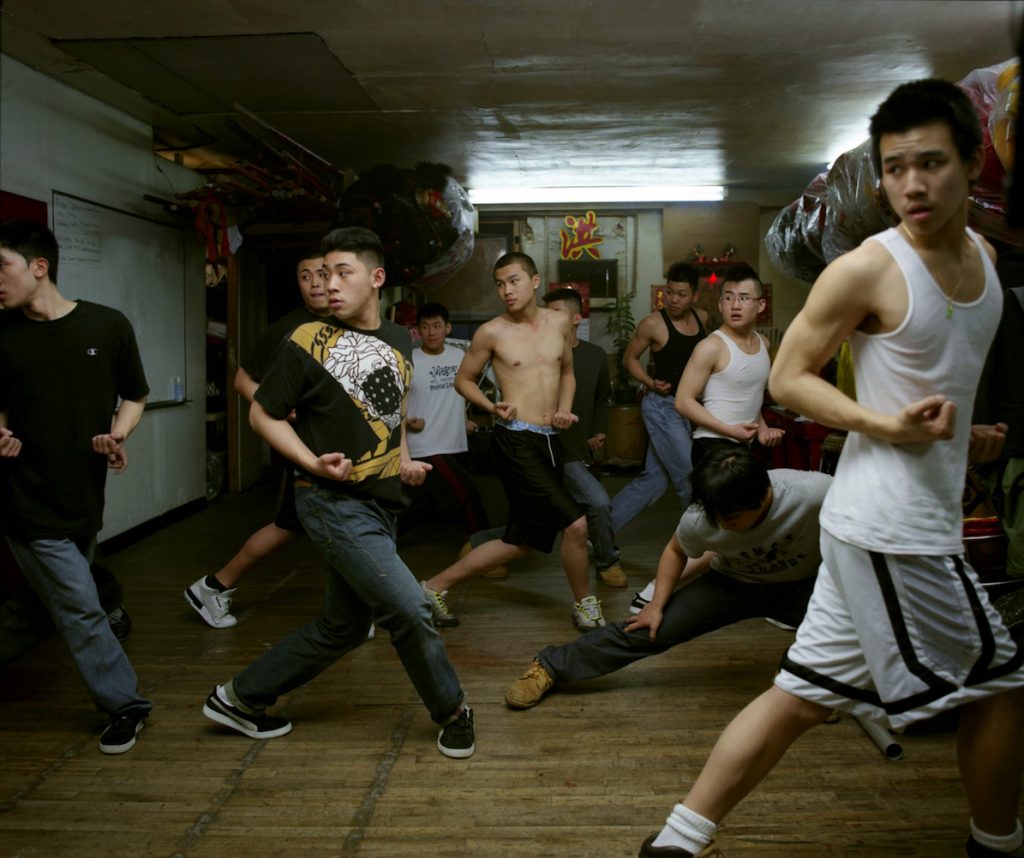
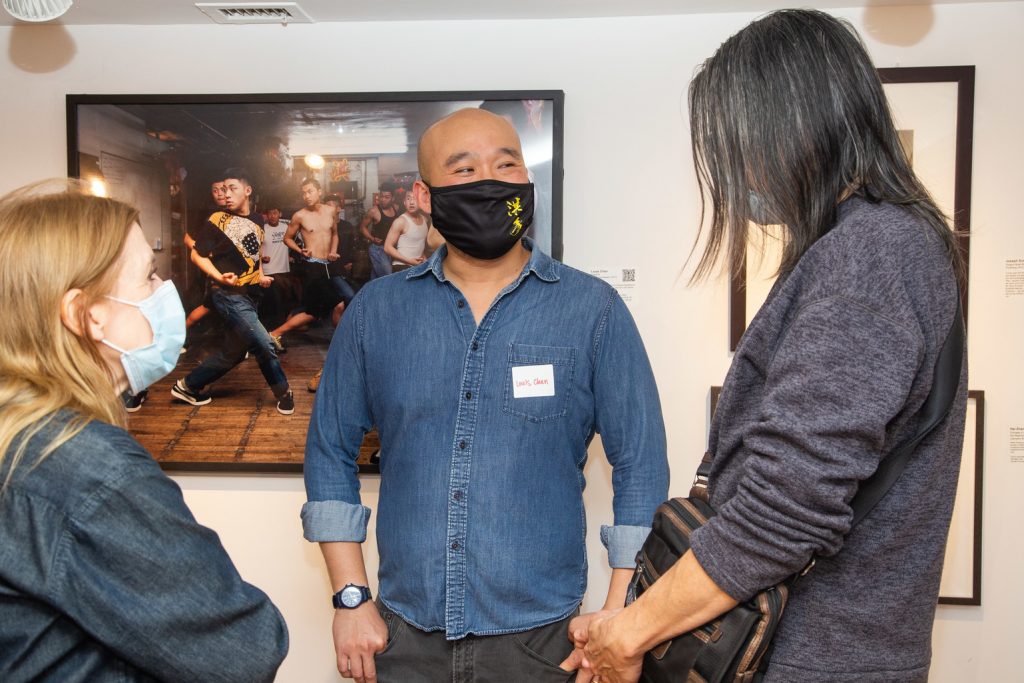
The show’s central image is a large portrait of a young Corky Lee taken in 1973 by Bob Hsiang. In the shot, a cool-looking Lee sports a funky beard and long hair and wears a striped T-shirt.
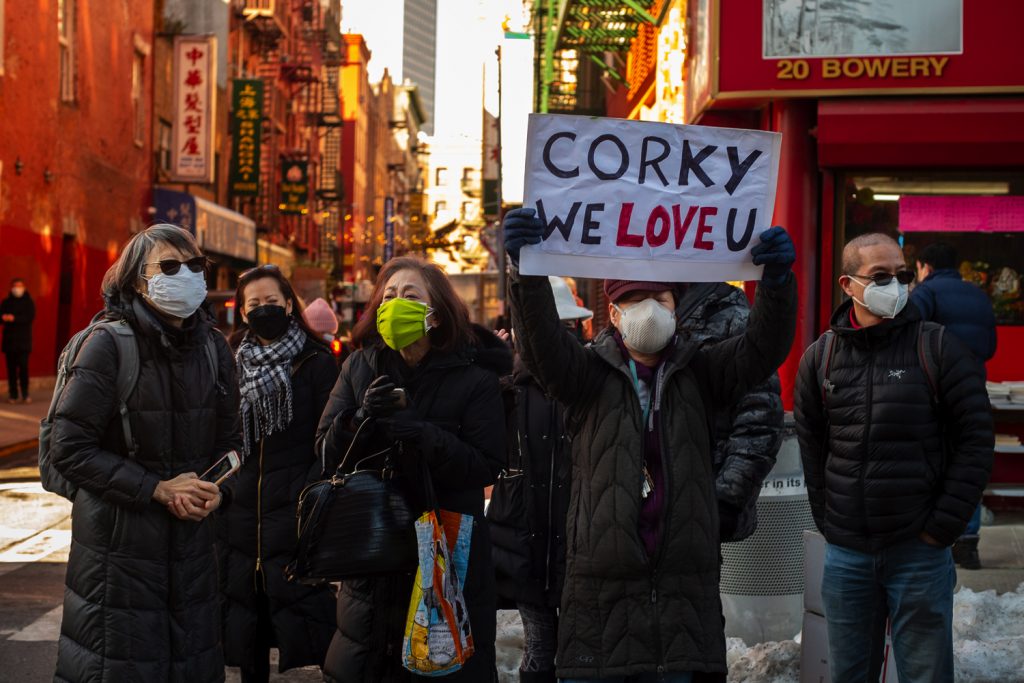
In the accompanying label, Hsiang describes the photo: “I met Corky after college and was living near Chinatown in a collective known as ‘217 Collective.’ He was already active in Chinatown housing issues. One day he needed a camera so I lent him my Pentax and he proceeded to use it for documenting substandard housing conditions in Chinatown.
“This portrait of Corky was made rather unplanned and spontaneously. I also photographed other people in the collective. It was very candid.”
Another photo by Hsiang in exhibit also captures the young Lee, showing him editing slides at the Asian Media Collective, at 217 Madison St., in 1971.
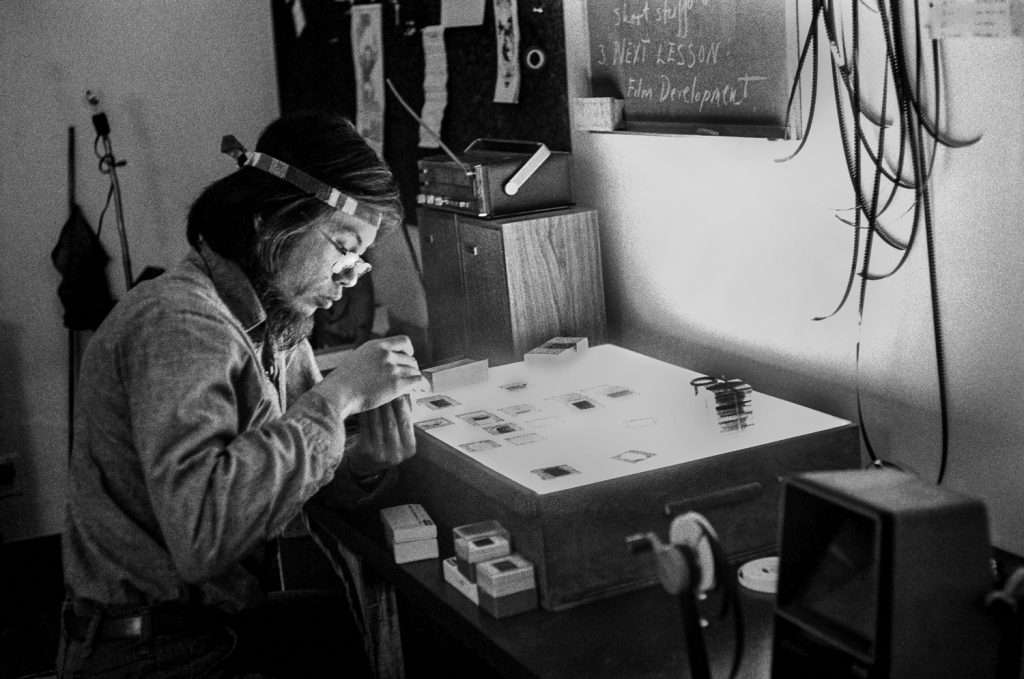
Co-founded by Lee, the Asian Media Collective was a group of activist photographers and filmmakers. Other members included Hsiang, John Kao, Gordon Lee and Nancy Hom.
Showing the span of Lee’s activism and photography is a diptych of Chinatown’s battles against the city’s repeated efforts to build new jails in the area. One of the shots, by Lee, was taken at a massive protest in 1982 against a plan for a new Chinatown jail. The other photo, by Tomie Arai, shows Lee standing up and taking photos at a raucous community meeting in 2018, at which locals railed against the city’s renewed push to construct a jail in the community.
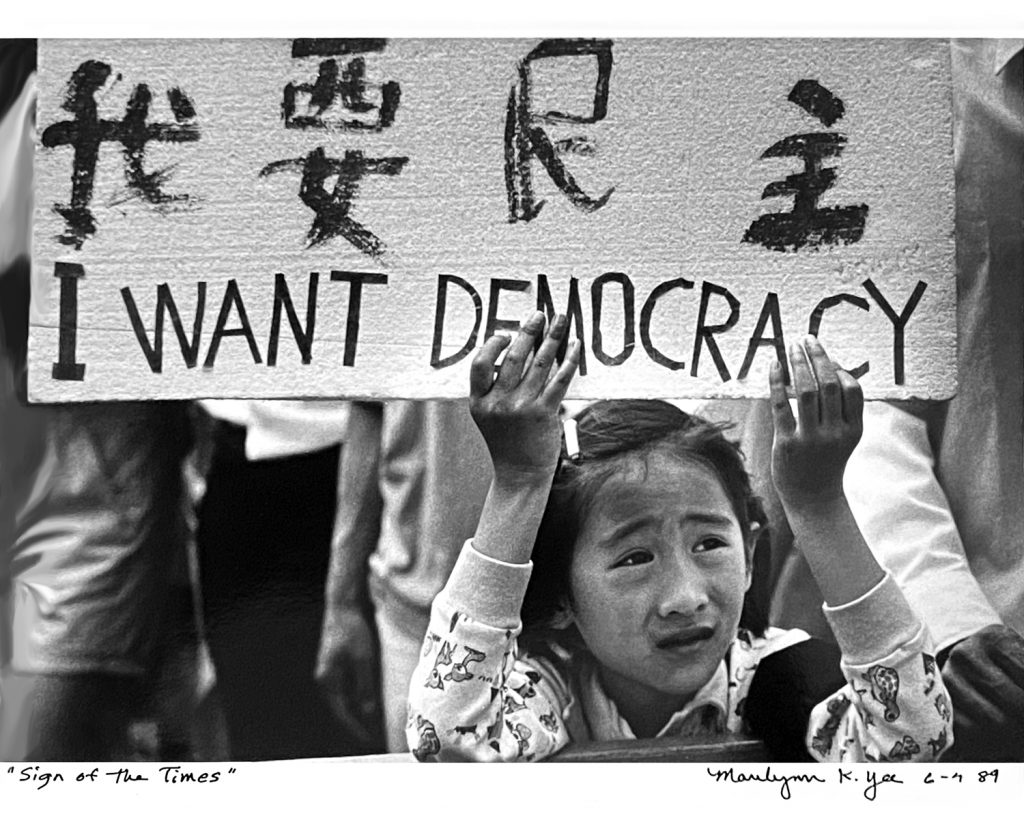
Another news-oriented photo, by Stan Honda, taken in 2017, shows Lee perched atop a building standpipe, photographing a rally commemorating the internment of Japanese Americans in camps during World War II.
As Ng noted, Lee’s work was definitely “pan-Asian.”
Marilynn K. Yee, a former New York Times photographer, also has an image in the show. Hers is of a young girl outside the Chinese Consulate, at 42nd St. and 12th Ave., in 1989, protesting the military crackdown against the Tiananmen Square demonstrations.
“It’s a great tribute to him and the memory of Corky,” Yee said of the Soho show. “I think people are beginning to realize how much he covered in the community. You would always see him covering everything and anything. He was an artist, too: He was always working, it was his passion. It’s like a great artist, like Van Gogh — he’s being appreciated even more now.”
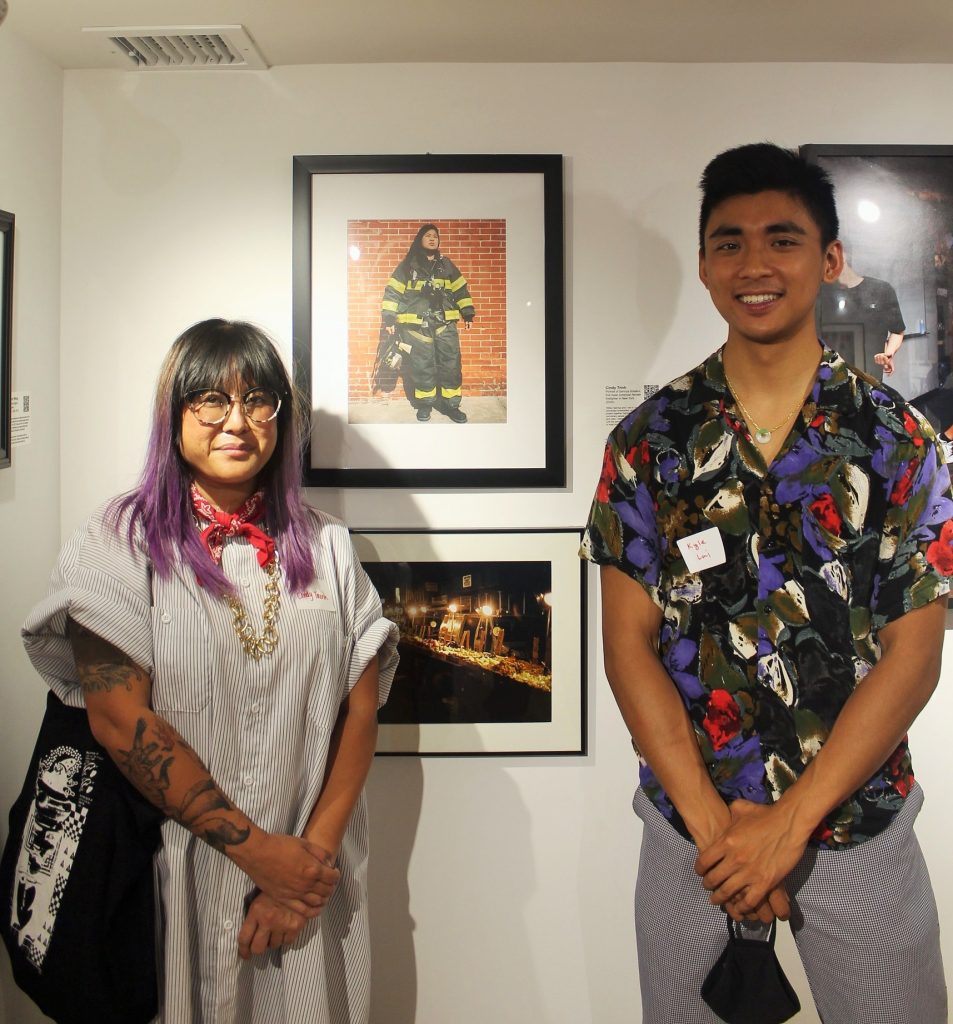
Two young photographers in the exhibit said Lee nurtured them by giving “tough love.”
“He was one of the very few Asian-American activist photographers, so we connected,” said Cindy Trinh. “He helped me get an exhibition in 2019 on the Bowery, in Chinatown. He just sort of naturally, organically took me under his wing.”
Her photo in the show is of Sarinya Srisakul, the city’s first Asian-American woman firefighter.
Reflecting on Lee’s lasting influence on her, Trinh said, “He’s just been like a voice in my heart.”
Definitely, Lee had a voice that you don’t forget. It was kind but firm, often tinged with a gentle humor as he told one of his famous anecdotes.
Kyle Lui said, “His main thing was cropping. He loved tight cropping. He was, like, ‘There should never be any wasted space in the photo.'”
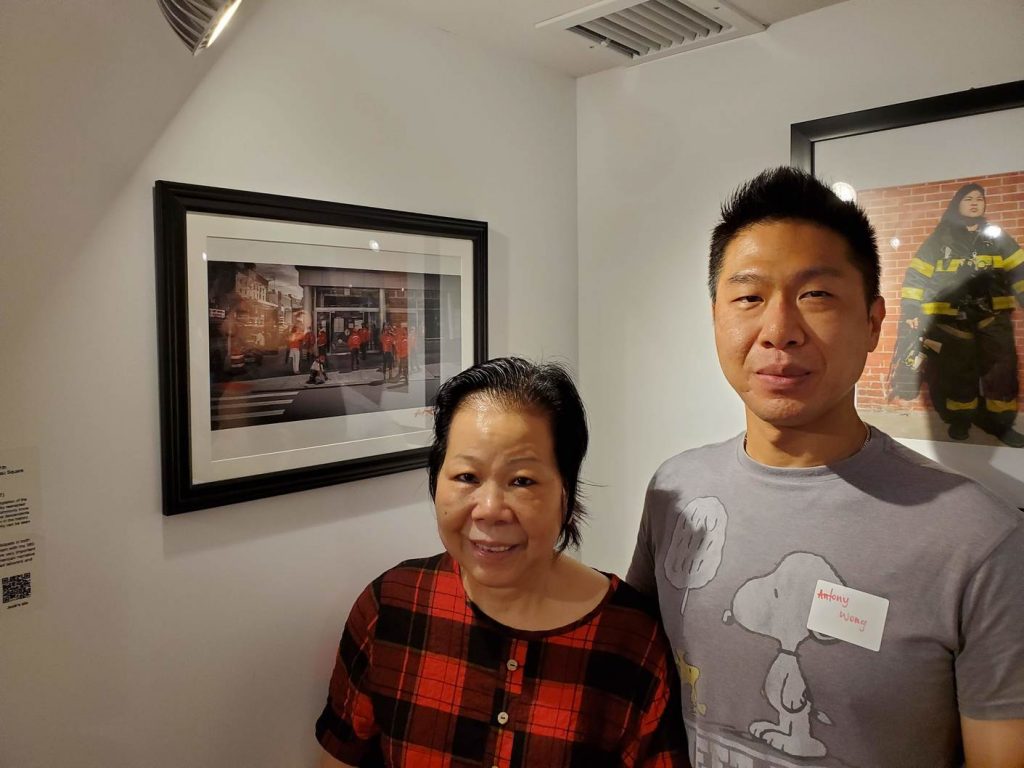
Antony Wong, a member of Community Board 2, of which he is the treasurer, also has an image included in the exhibit. Not a pro photographer, he met Lee in 2002 at CUNY when the legendary lensman gave a talk and slideshow of 20 years of his work.
Wong’s photo, taken last May, shows Lee and his partner, Zhou, talking with a group of Guardian Angels who were on patrol in Chinatown. Wong chanced upon them after a jog and snapped the scene with his phone.
“I learned a lot from Corky,” he said, recalling Lee’s coverage of the Peter Yew police brutality case in 1975 that rocked Chinatown. “Sadly, he doesn’t have a book out. He was going to do it five years ago. He had just quit his job at Expedi [printing]. But he had too many photos to choose from.”
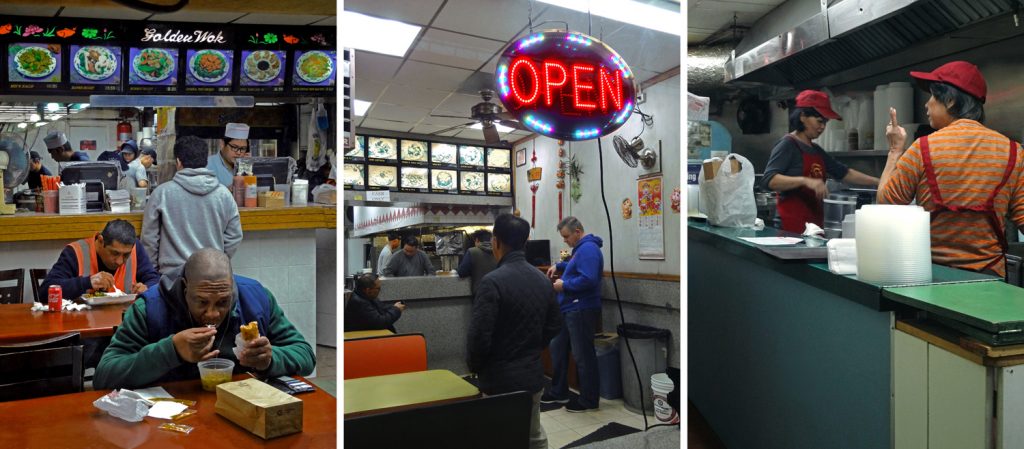
Lee’s activism continues to inspire Wong in his work at C.B. 2. He noted that he lives “in the impacted area” of Chinatown in the Soho/Noho upzoning plan, which the community is currently battling in court.
“One family owns a lot of property in that area,” he said, referring to the Chus.
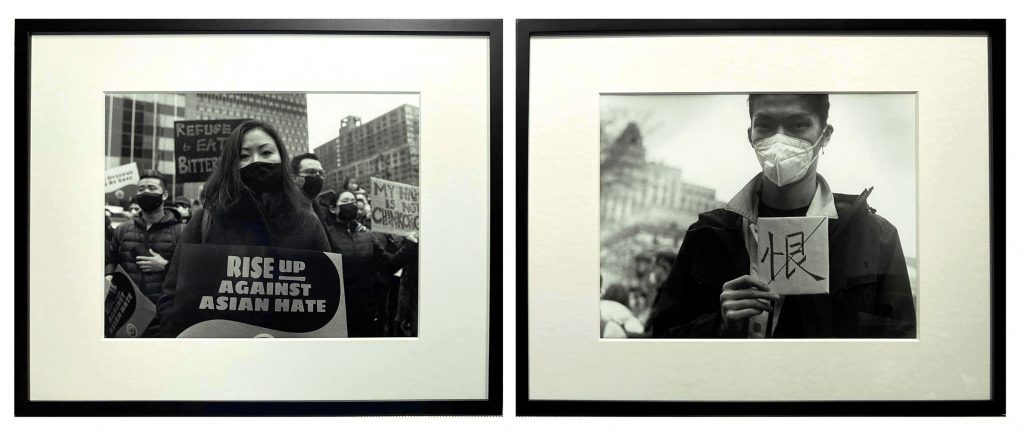
As Edward Cheng has been covering recent anti-Asian violence rallies, he said he can feel the spirit of Corky Lee.
For his description panel next to his two photos, Cheng wrote, “In the past months, I’ve imagined Corky showing up at rallies, protests and celebrations around the neighborhood. I show up to see he is there — he is always with us. … Corky would have been at this Rise Up Against Asian Hate rally. And he would have wanted me there, too.”
People are also encouraged to contribute their own snapshots of Lee to the exhibit. A corner of the gallery is devoted to prints of the photographer that friends and acquaintances have dropped off. Some of these are also displayed on a long table in the middle of the gallery space. Some of these pictures will be swapped out as new ones come in.
A pair of twins at the meet-and-greet were up on all the Chinatown news and gossip. One of them, James, when asked if Lee would have supported Chris Marte or Jenny Low in the City Council District 1 primary election, said, without missing a beat, “He liked Marte. Chris was the most outspoken for the Chinatown Working Group [rezoning plan].” On the other hand, Lee would not have supported Low, he said, noting, “Twenty-four-hour healthcare. She was on the board for many years.”
He was referring to the regulation under which home healthcare workers who visit a client for 24 hours do not get paid for the full time. Low formerly headed the board of the Chinese-American Planning Council, which employs these kind of healthcare workers. It was a hot issue in the recent election.
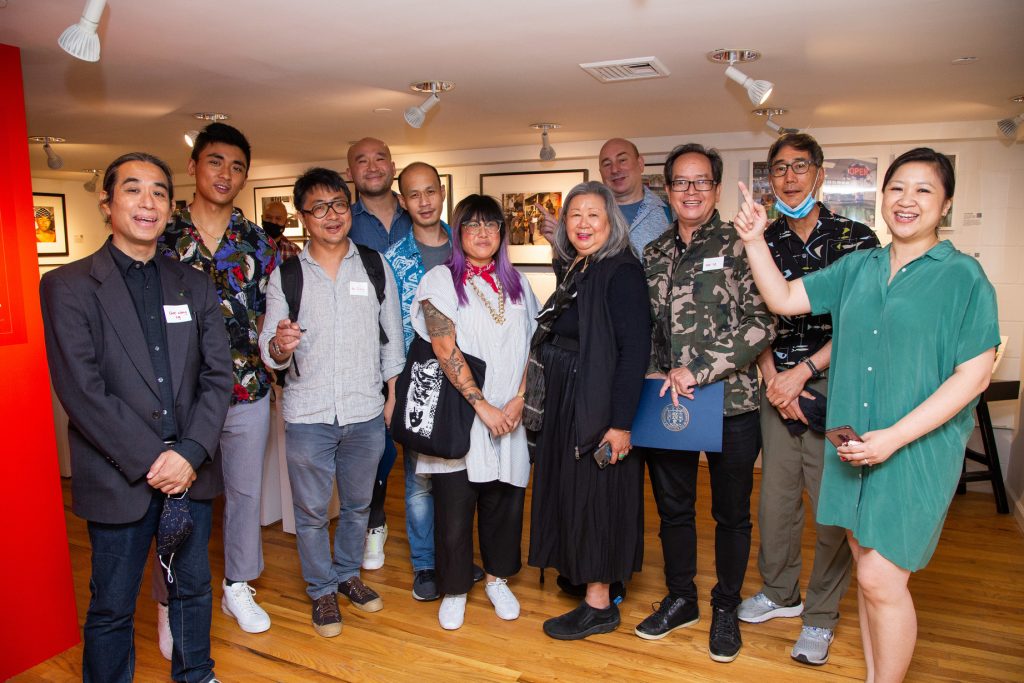
Kwong, Pearl River Mart’s president, said the exhibit was both a labor of love and very emotional.
“I think the response has been just overwhelming,” she said. “And, as Corky’s friends, we just wanted to do him justice. To be honest, it was really sad working on it. But it was a way to process the grief. You felt Corky’s presence.”
The two first met when Kwong took over Pearl River Mart five years ago at its previous location nearby. She remembered her last meeting with Lee, in December of last year.
“He would always come and visit unexpectedly,” she said. “The last time I saw him was at the peak of our holiday retail season, which was insane during the pandemic because everyone was shopping online. My staff and I were exhausted and struggling to keep up and everyone just wanted everything immediately.
“Corky poked his head into my office, and knowing Corky, I knew we would probably chat for two hours since he was a talker. I didn’t have the time, but I made the time, because that’s a lesson Corky taught me: When friends come to call, you make the time. We did indeed talk for two hours, and I’m so glad we did. I’ll have the pleasure of those two hours forever.”
“He was one of a kind,” she reflected, “someone who was endlessly interested in the world, an artist who marched to the beat of his own drum and brought us all along with him.”
There was no question: In the photos on the gallery’s walls, in the warm feelings in the room, in the positive and lasting impact he made on so many people, in the voice that, if you knew him, you could hear talking in your head, the spirit of Corky Lee was very much present. Corky Lee was in the house.
“Corky Lee on My Mind: A Photographic Tribute,” at Pearl River Mart Gallery, 452 Broadway, through Aug. 29.

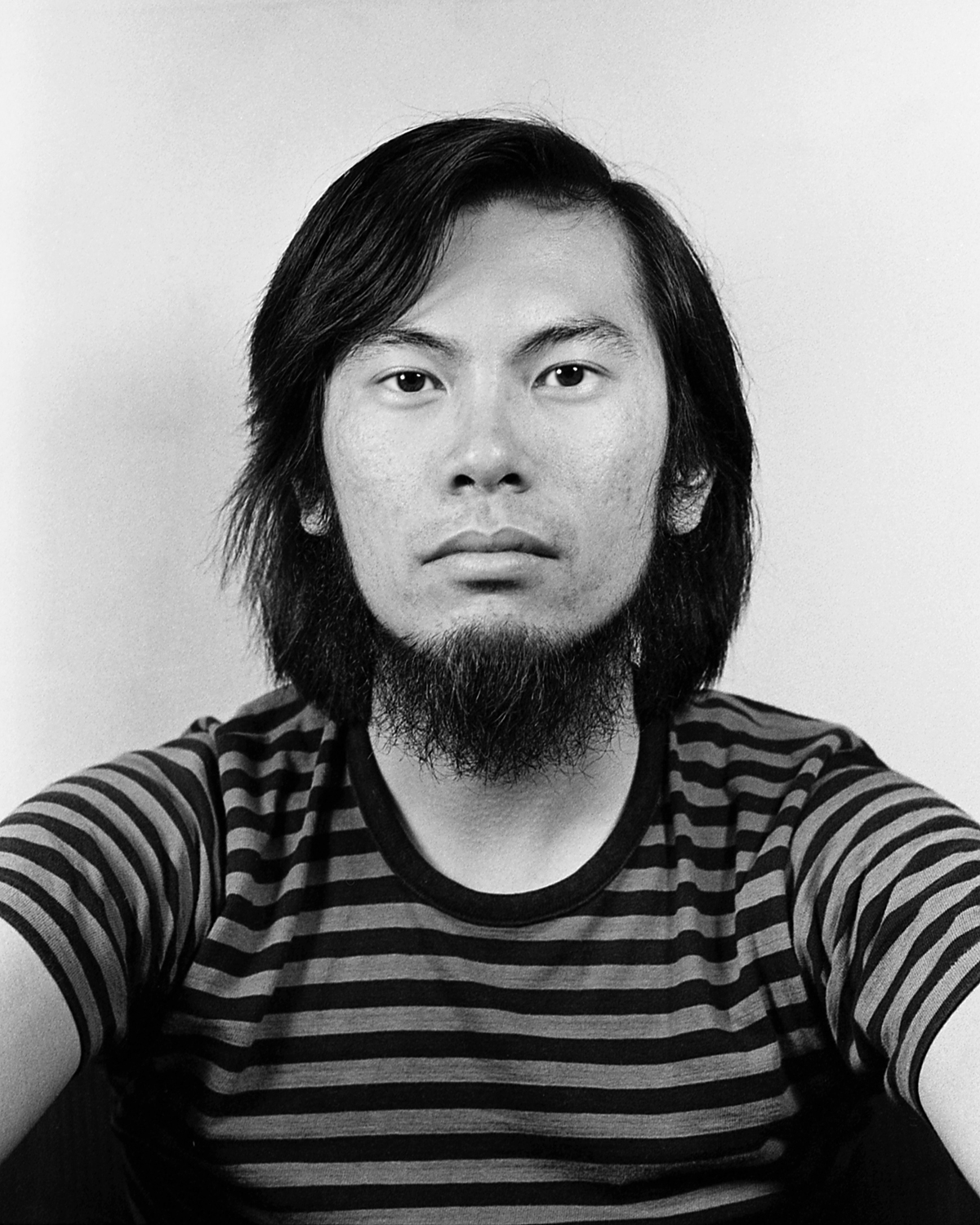
wonderful